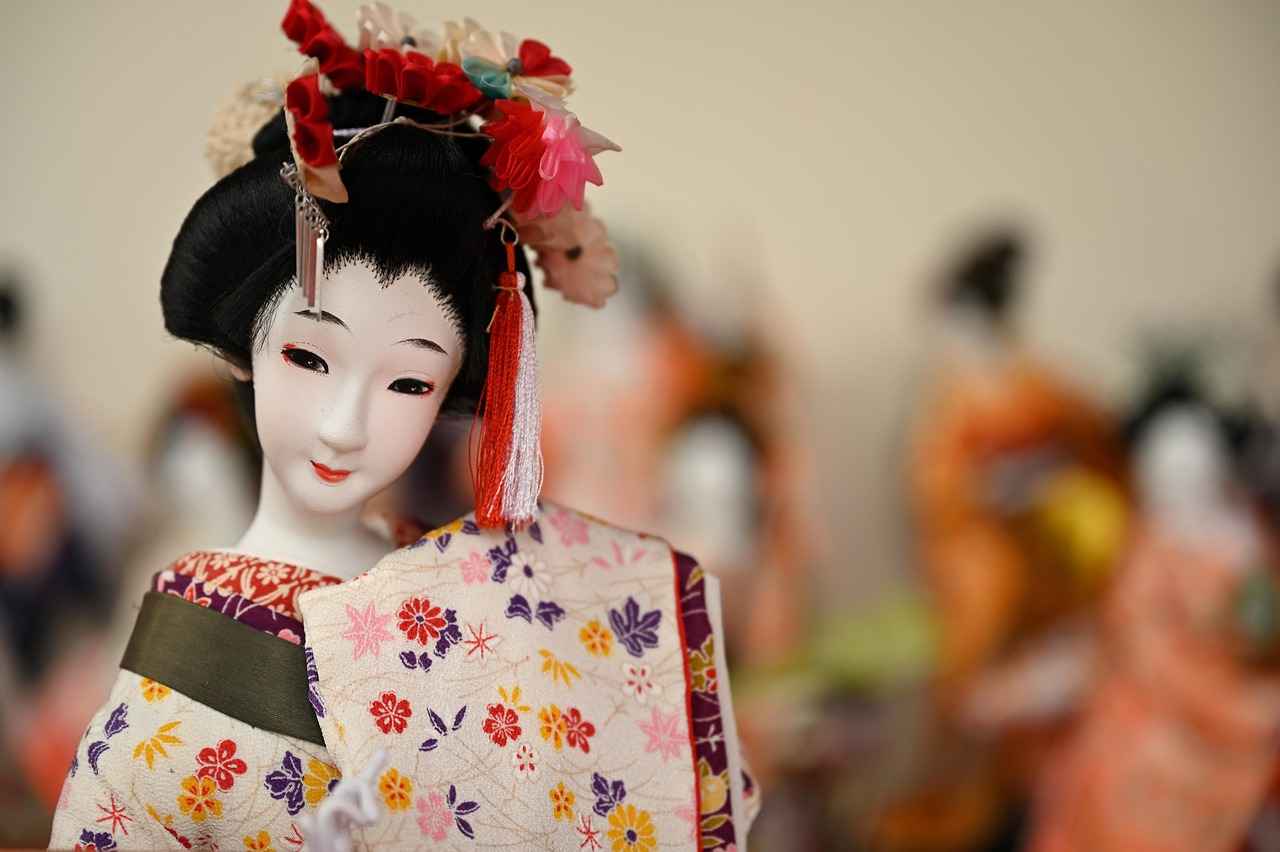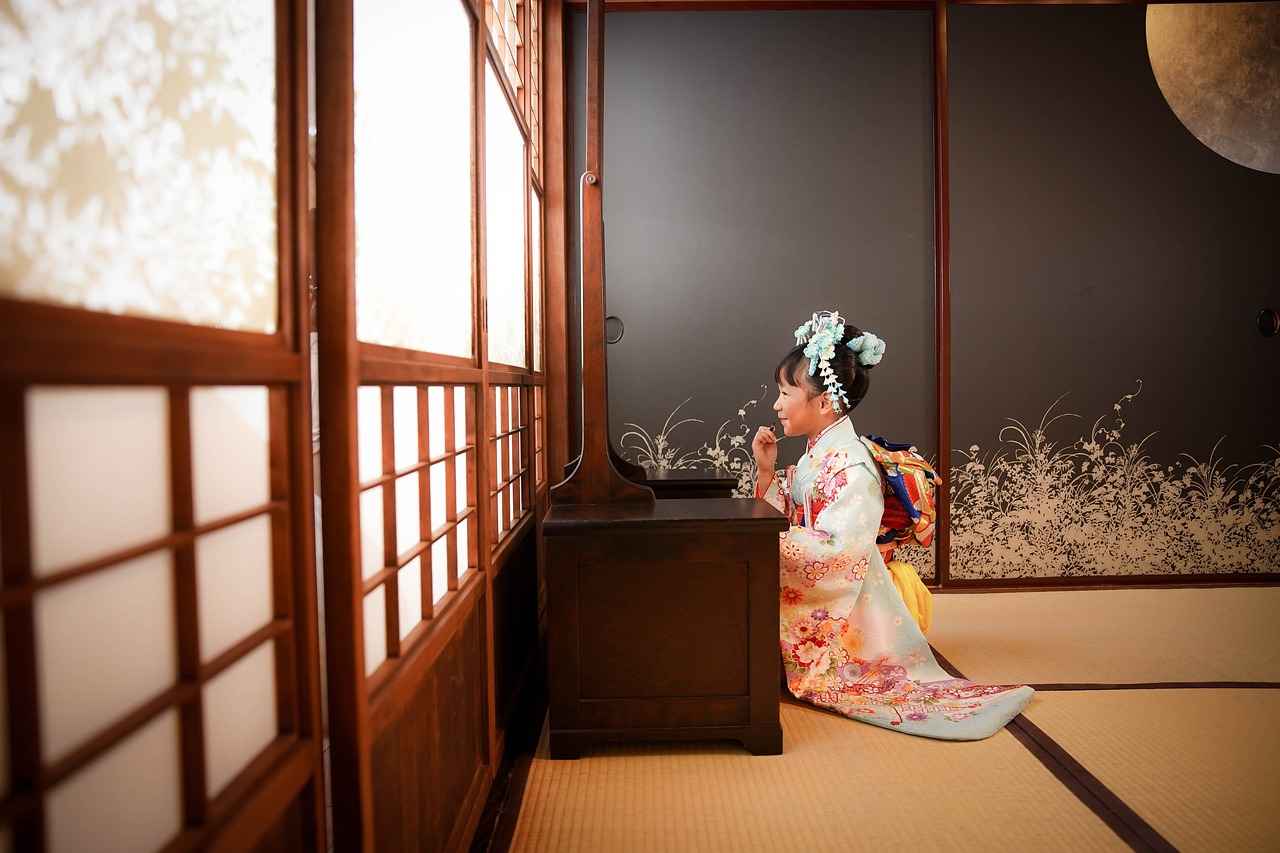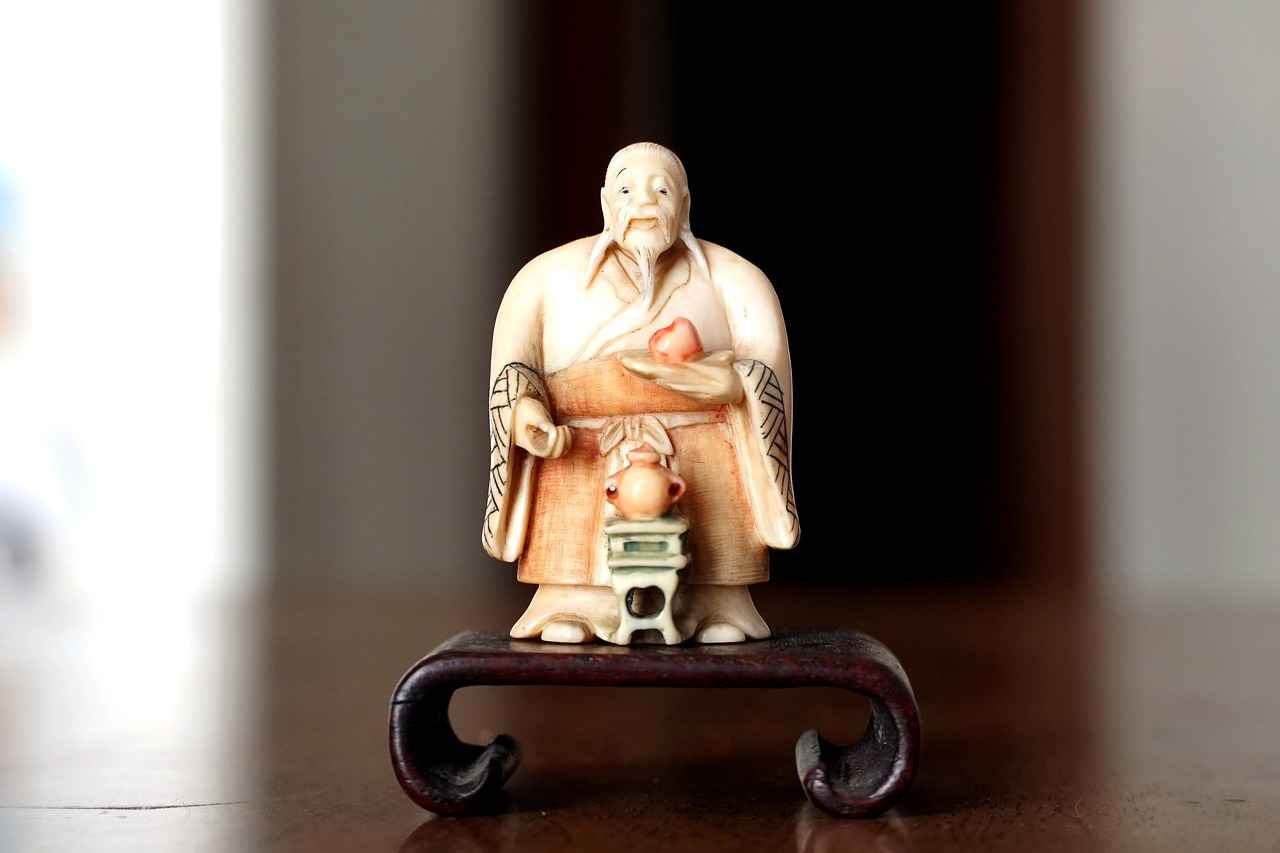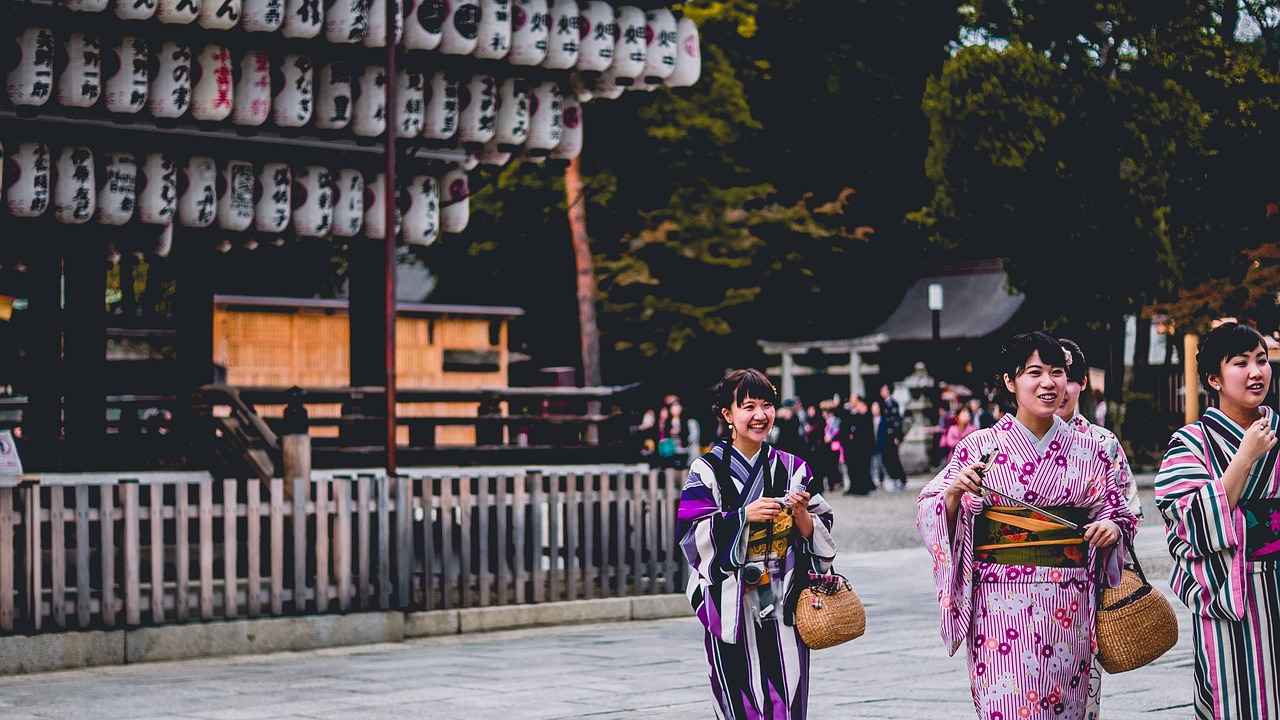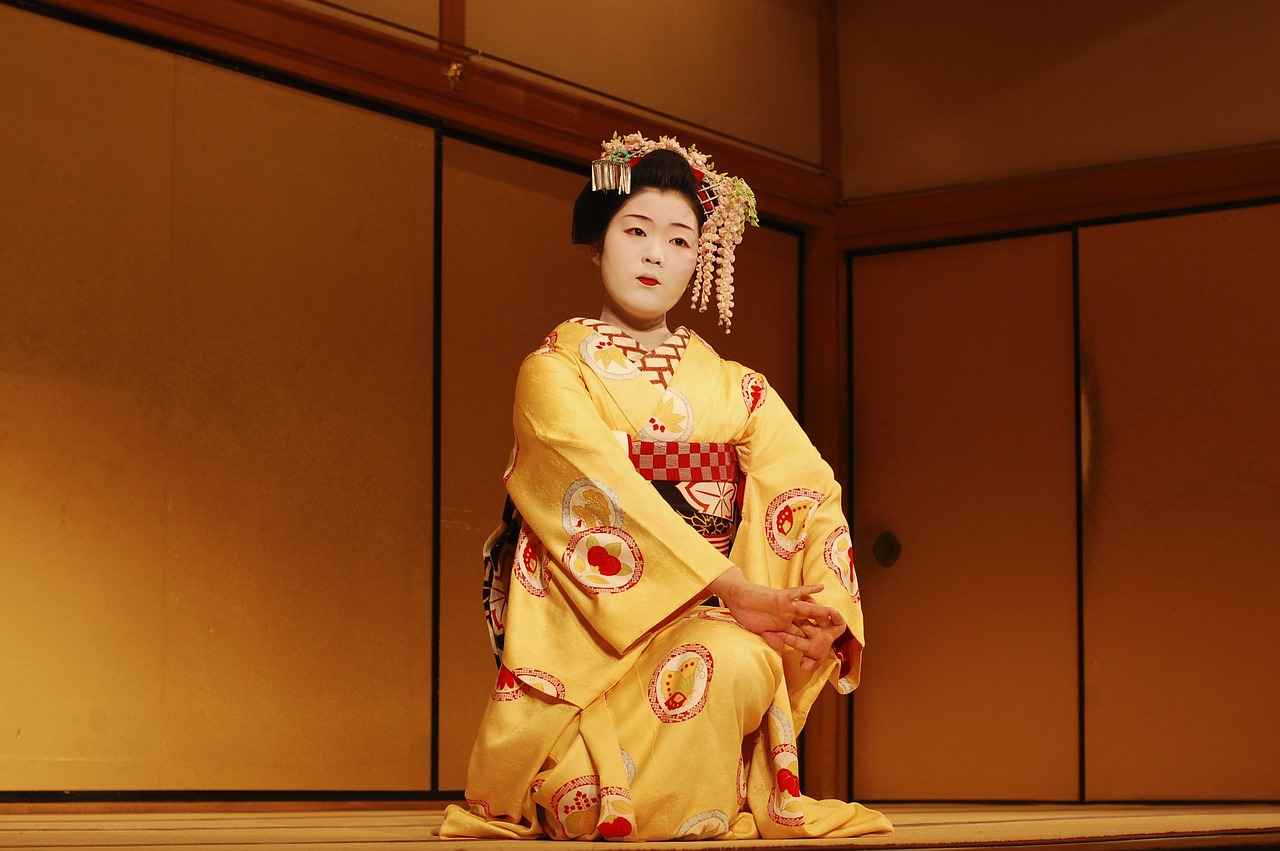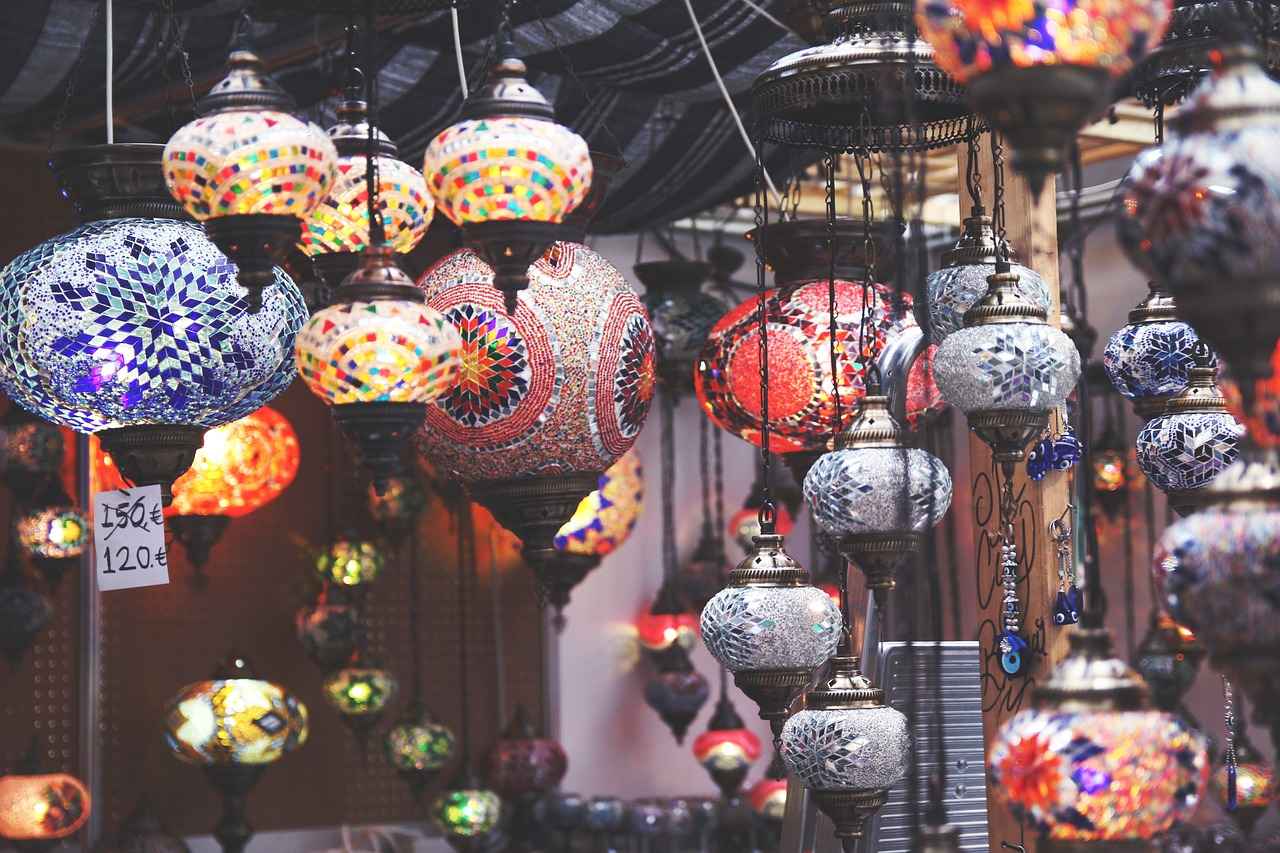This article explores the fusion of traditional kimono styles with contemporary fashion, offering insights and practical tips to achieve a unique and stylish look that honors cultural heritage.
The kimono is a symbol of Japan’s rich cultural history, representing not just clothing but a deep-rooted tradition that has evolved over centuries. To appreciate the beauty of this garment, it is essential to understand its cultural significance. By blending traditional elements with modern fashion, you can create a look that is both stylish and respectful of its origins.
The kimono is more than just an outfit; it is a canvas that tells stories of the past. Each pattern and color holds meaning, representing various aspects of Japanese culture. By acknowledging this significance, you can wear your kimono with pride and intention.
Selecting the appropriate fabric is crucial for both comfort and aesthetics. Traditional fabrics like silk offer authenticity, while modern materials like cotton provide versatility. Consider the following:
- Silk: The classic choice, known for its luxurious feel.
- Cotton: Ideal for casual outings, offering comfort and practicality.
- Blended Fabrics: Combining traditional and modern elements for a unique style.
Patterns and colors play a vital role in kimono design. Selecting hues and motifs that respect tradition while appealing to contemporary tastes can elevate your outfit. Look for designs that incorporate modern aesthetics without losing the essence of the kimono.
Accessories can transform your kimono outfit, adding a modern flair. Consider pairing your kimono with:
- Footwear: From traditional zori sandals to trendy sneakers, footwear can significantly impact your look.
- Jewelry: Choose pieces that harmonize with your kimono while showcasing your personal style.
Layering adds depth and dimension to your kimono look. Explore stylish outerwear options that maintain a chic appearance while providing warmth. Mixing and matching with contemporary fashion can also create a standout look.
Different occasions call for varied styling approaches. For casual outings, keep it relaxed and comfortable. When dressing for formal events, enhance your kimono with sophisticated elements for a polished appearance.
Combining traditional kimono elements with modern fashion allows for creative expression while honoring cultural heritage. Embrace this unique fusion to create a look that is distinctly yours.
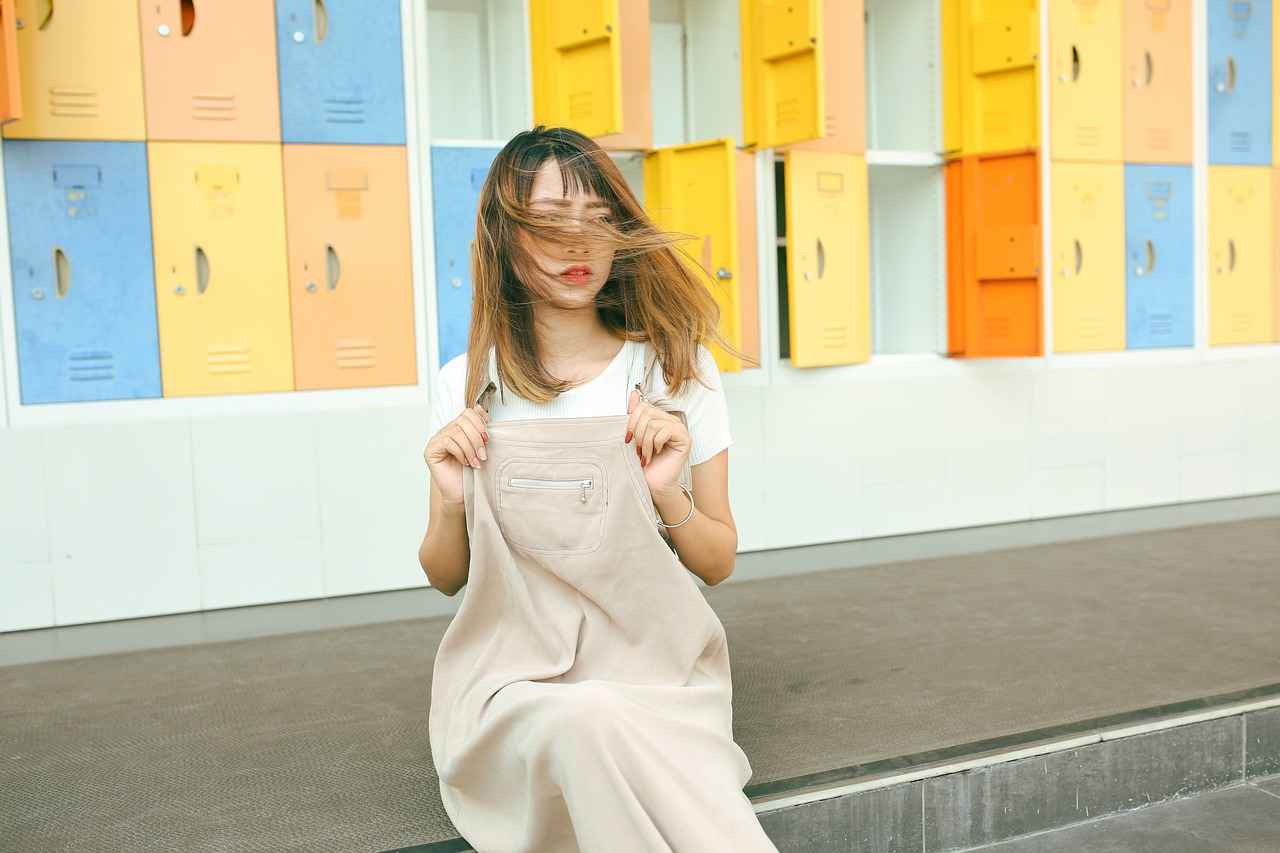
Understanding the Kimono’s Cultural Significance
The kimono, a traditional Japanese garment, is much more than just a piece of clothing; it is a profound representation of Japanese culture and history. This iconic attire has been worn for centuries, evolving through various eras while maintaining its cultural significance. Understanding the kimono’s rich heritage can greatly enhance your appreciation and approach to modern styling.
The kimono is characterized by its unique construction and intricate designs, often featuring symbols and patterns that hold deep meanings. For instance, certain motifs such as cherry blossoms symbolize transience and beauty, while others may represent prosperity and good fortune. This connection to nature and spirituality is what makes the kimono a living piece of art.
In contemporary fashion, the kimono has transcended its traditional boundaries, becoming a popular choice in global fashion trends. Designers have begun to incorporate kimono elements into their collections, fusing traditional aesthetics with modern silhouettes. This blend not only pays homage to the garment’s origins but also allows individuals to express their personal style in innovative ways.
Furthermore, understanding the cultural significance of the kimono encourages a respectful approach to styling. When wearing a kimono, it is essential to consider its historical context and the values it represents. This awareness can inspire individuals to choose designs and accessories that honor the garment’s legacy while still embracing modern fashion.
In conclusion, the kimono is a powerful symbol of Japanese heritage that continues to influence today’s fashion landscape. By appreciating its cultural significance, one can create a unique and stylish look that seamlessly blends tradition with modernity.
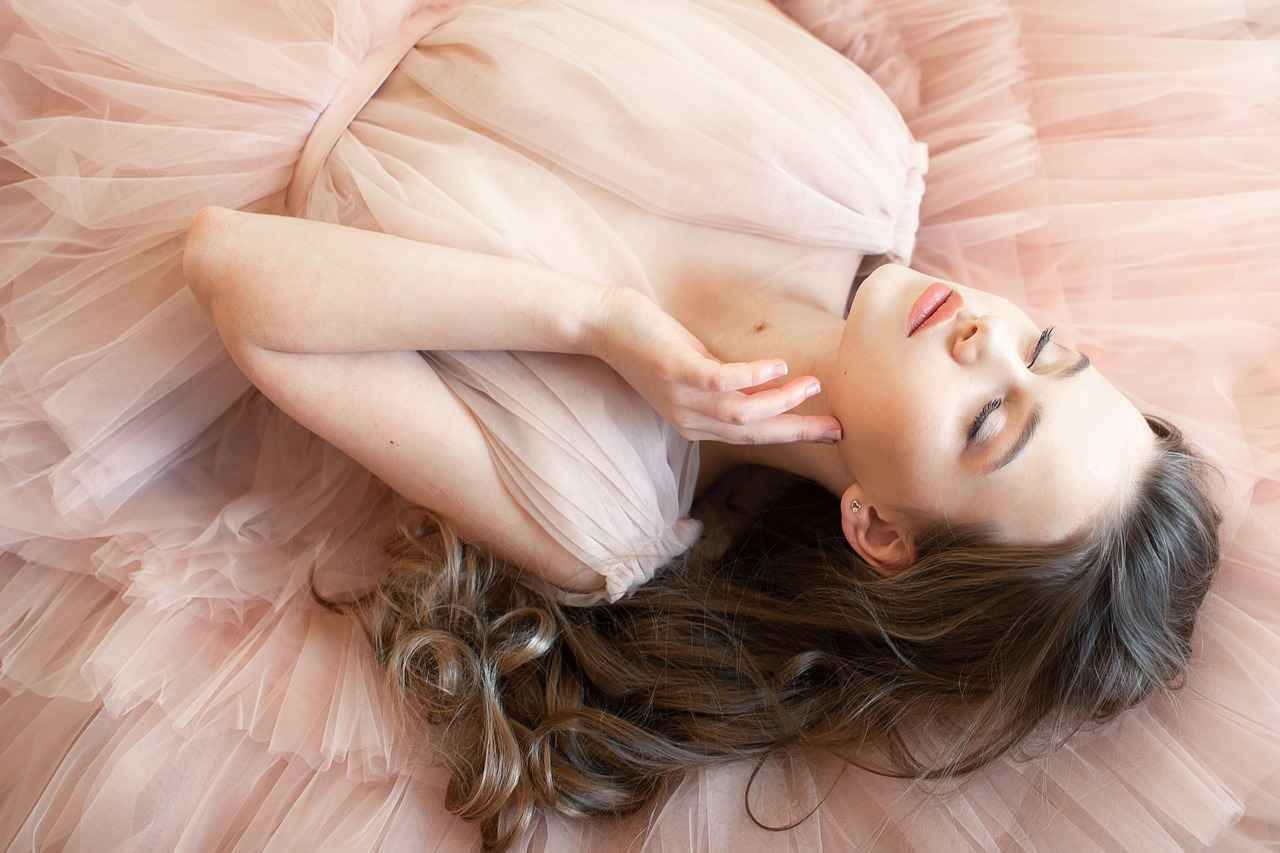
Choosing the Right Fabric for Your Kimono
is an essential step in creating a garment that is both comfortable and visually appealing. The fabric you select can dramatically influence the overall look and feel of your kimono, making it crucial to explore various options that align with both traditional craftsmanship and modern trends.
When considering fabric for your kimono, you have a range of materials to choose from, each with its unique characteristics. Below, we delve into some of the most popular options:
- Silk: Renowned for its luxurious texture and vibrant colors, silk is the classic choice for kimonos. It drapes beautifully and adds an air of elegance, making it suitable for both traditional ceremonies and modern events.
- Cotton: This fabric is ideal for casual wear. Cotton kimonos are breathable and comfortable, making them perfect for everyday use. They can easily be dressed up or down, allowing for versatility in styling.
- Rayon: A popular alternative to silk, rayon mimics the softness and sheen of silk but is often more affordable. It is lightweight and flows well, making it a great option for summer kimonos.
- Polyester Blends: For those seeking durability and ease of care, polyester blends are an excellent choice. They resist wrinkles and maintain their shape, making them practical for frequent wear.
In addition to the material, consider the weight and texture of the fabric. Lighter fabrics are perfect for warmer climates, while heavier materials can provide warmth during cooler months. Furthermore, the pattern and color of the fabric can significantly affect the kimono’s aesthetic. Opt for traditional motifs to honor the garment’s heritage, or choose modern prints to create a contemporary look.
Ultimately, selecting the right fabric is about finding a balance between comfort and style. By exploring various materials and understanding their properties, you can create a kimono that not only looks stunning but also feels great to wear.
Traditional vs. Modern Fabrics
When it comes to creating a stunning kimono look, the choice of fabric plays a pivotal role. The contrast between traditional and modern fabrics not only influences the garment’s aesthetic but also its functionality. In this section, we will explore how to effectively blend these two worlds for a truly unique kimono style.
- Traditional Fabrics: The Essence of Authenticity
Traditional fabrics, such as silk, are renowned for their luxurious texture and rich history. Silk kimonos are often adorned with intricate designs and vibrant colors, making them a classic choice for formal occasions. This fabric is not only beautiful but also tells a story of cultural significance.
- Modern Fabrics: Versatility and Comfort
On the other hand, modern materials like cotton and synthetic blends offer incredible versatility. These fabrics are lightweight, breathable, and easy to maintain, making them suitable for everyday wear. Incorporating these materials allows for a more relaxed and contemporary kimono style.
- Blending Traditional and Modern
The true beauty lies in the fusion of traditional and modern fabrics. For instance, pairing a silk kimono jacket with a cotton underlayer can create an eye-catching contrast that maintains cultural integrity while embracing modern comfort. This approach allows for the creation of unique styles that reflect personal taste.
In conclusion, understanding the strengths of both traditional and modern fabrics can empower you to create a kimono look that is not only stylish but also meaningful. By carefully selecting and blending these materials, you can honor the rich heritage of the kimono while also adapting it to contemporary fashion trends.
Silk: The Classic Choice
When it comes to kimonos, silk stands out as the quintessential fabric, revered for its luxurious texture and the ability to showcase vibrant colors. This timeless material has been a staple in kimono design for centuries, and its enduring appeal lies in its unique properties.
Silk not only feels exquisite against the skin but also drapes beautifully, enhancing the overall silhouette of the kimono. Its natural sheen reflects light in a way that adds depth and richness to colors, making silk kimonos particularly striking. Whether in traditional patterns or modern designs, the allure of silk is undeniable.
One of the reasons silk remains a favored choice is its versatility. While it is often associated with formal occasions, silk kimonos can be styled for a variety of settings, from casual gatherings to elegant events. This adaptability allows wearers to express their personal style while honoring the cultural significance of the kimono.
Moreover, silk is highly breathable, making it a comfortable option for different climates. Its moisture-wicking properties help regulate body temperature, ensuring that the wearer feels comfortable throughout the day. This practical aspect, combined with its aesthetic appeal, solidifies silk’s position as the classic choice for kimono enthusiasts.
In addition to traditional silk, modern designers are experimenting with silk blends that incorporate other materials, enhancing durability and ease of care. These innovations allow for creative designs that maintain the luxurious feel of silk while catering to contemporary fashion demands.
In conclusion, silk is not merely a fabric; it is a symbol of elegance and tradition. Its rich history and adaptability in modern fashion make it a timeless option for kimonos, bridging the gap between the past and the present.
Cotton and Blends for Everyday Wear
Cotton and blended fabrics are increasingly popular choices for those looking to create a stylish yet comfortable kimono look. These materials not only provide practicality but also cater to the modern lifestyle, making them ideal for casual outings. In this section, we will explore how to effectively incorporate cotton and blended fabrics into your kimono ensemble.
One of the key advantages of using cotton is its breathability. This natural fiber allows for airflow, making it perfect for warmer weather. Additionally, cotton is easy to care for, which is a significant consideration for everyday wear. Blended fabrics, on the other hand, often combine cotton with synthetic fibers to enhance durability and reduce wrinkling, providing a versatile option for various occasions.
When selecting a cotton kimono, consider opting for lightweight options that drape well. Look for designs that feature vibrant prints or subtle patterns to maintain a contemporary feel. Pairing a cotton kimono with a simple t-shirt and jeans can create a relaxed yet chic outfit suitable for a day out with friends or a casual lunch.
Blended fabrics can also offer unique textures and finishes. For instance, a cotton-polyester blend may provide the softness of cotton with the added benefit of stretch, allowing for greater mobility. Such fabrics can be styled effortlessly with leggings or tailored trousers, making them ideal for a more polished look.
To enhance your kimono look, consider accessorizing with statement jewelry or a stylish belt to cinch the waist. Footwear choices can range from casual sandals to trendy sneakers, depending on the vibe you wish to achieve. Remember, the goal is to maintain a balance between traditional aesthetics and modern comfort.
In conclusion, incorporating cotton and blended fabrics into your kimono wardrobe not only promotes comfort but also allows for a stylish expression of individuality. By choosing the right materials and pairing them thoughtfully, you can create a unique look that pays homage to traditional styles while embracing contemporary fashion.
Patterns and Colors: Balancing Tradition and Modernity
Patterns and colors are fundamental elements in kimono design, serving as a bridge between tradition and modernity. The choice of hues and motifs can significantly influence the overall aesthetic of a kimono, making it essential for both fashion enthusiasts and cultural appreciators to understand how to navigate these choices.
When selecting patterns, consider traditional motifs such as cherry blossoms, waves, and cranes, which carry deep cultural meanings. These designs not only reflect the beauty of nature but also symbolize various virtues such as longevity and prosperity. Incorporating these elements into a modern kimono can create a unique fusion that respects heritage while appealing to contemporary tastes.
In terms of colors, the palette can range from vibrant shades to muted tones. Traditional kimonos often feature a rich color scheme that corresponds to the seasons. For instance, pastels are popular in spring, while deep reds and golds are favored in autumn. To balance tradition with modernity, consider using a monochromatic palette or adding unexpected pops of color that reflect current fashion trends.
- Mixing Patterns: Try combining different traditional patterns in a modern way, such as pairing a floral print with geometric shapes.
- Color Blocking: Use bold color blocking techniques to create a striking look that stands out.
- Minimalist Approach: Opt for a minimalist design with subtle patterns and colors for a chic, modern appearance.
Ultimately, the key to achieving a harmonious balance between tradition and modernity lies in understanding the significance of patterns and colors. By thoughtfully selecting these elements, you can create a kimono that not only honors its cultural roots but also resonates with today’s fashion sensibilities.

Accessorizing Your Kimono Look
Accessories play a crucial role in transforming your kimono outfit, infusing it with a modern flair that can elevate your overall appearance. By carefully selecting the right accessories, you can create a unique style that honors the traditional essence of the kimono while embracing contemporary trends.
Here are some essential accessories to consider:
- Obi Belts: A wide range of obi belts are available, from colorful fabrics to intricate designs. Choosing a statement obi can enhance the waistline and add a pop of color to your outfit.
- Jewelry: Minimalist jewelry can complement the elegance of a kimono. Consider delicate necklaces or earrings that add a touch of sophistication without overwhelming the outfit.
- Footwear: The choice of footwear can significantly impact your look. Traditional zori sandals bring authenticity, while modern sneakers can create a trendy, casual vibe.
- Handbags: Opt for a stylish clutch or a modern crossbody bag that matches your kimono. This not only serves a practical purpose but also adds a contemporary element to your attire.
- Scarves: A lightweight scarf can be draped over your shoulders or tied around your waist for added flair. Choose vibrant colors or patterns that resonate with your kimono’s design.
When accessorizing, it’s essential to strike a balance between tradition and modernity. Aim for a look that feels cohesive and reflects your personal style. For instance, pairing a traditional silk kimono with contemporary accessories can create a harmonious aesthetic that is both respectful of cultural heritage and aligned with current fashion trends.
In conclusion, accessorizing your kimono is an opportunity to express creativity and individuality. By thoughtfully selecting accessories, you can enhance your outfit and make a memorable statement, all while celebrating the beauty of this timeless garment.
Footwear Choices: From Traditional to Trendy
When it comes to styling a kimono, the choice of footwear plays a crucial role in achieving a harmonious and visually appealing look. The right shoes not only complement the kimono but also reflect the wearer’s personal style. This section explores various footwear options, ranging from traditional to modern, that can enhance your kimono ensemble.
- Zori Sandals: These traditional Japanese sandals are often made from rice straw or fabric. Their flat design allows for comfortable wear while maintaining a classic aesthetic. Zori are typically worn with yukata and are perfect for summer festivals.
- Geta: Another traditional option, geta are wooden sandals that elevate the wearer, providing a unique look. They are often paired with formal kimonos and are ideal for special occasions, adding an authentic touch to your outfit.
- Western-style Flats: For a more contemporary twist, consider wearing stylish flats. These can be paired with casual kimonos for a relaxed look while ensuring comfort during long wear.
- Heeled Sandals: Heels can elevate your kimono style, especially for formal events. Choose heeled sandals that offer stability and complement the colors and patterns of your kimono.
- Sneakers: For a modern and playful approach, sneakers can be an unexpected yet trendy choice. Opt for clean, minimalist designs that do not overpower the kimono’s elegance, making it suitable for casual outings.
In conclusion, the footwear you choose can significantly influence your overall kimono look. Whether you opt for traditional zori, stylish flats, or modern sneakers, each choice offers a unique way to express your style while respecting the cultural significance of the kimono. Consider the occasion and your personal comfort when selecting the perfect pair to complete your outfit.
Jewelry: Enhancing Your Kimono Ensemble
The right jewelry can significantly elevate your outfit, especially when wearing a traditional kimono. Selecting the perfect pieces is essential to not only harmonize with the kimono’s intricate designs but also to showcase your personal style. Here are some tips to help you choose the right jewelry that complements your ensemble.
- Consider the Kimono’s Color Palette: When choosing jewelry, take into account the colors of your kimono. If your kimono features vibrant hues, opt for subtle jewelry that won’t overwhelm the outfit. Conversely, if your kimono is more muted, bold jewelry can create a striking contrast.
- Match the Style: Traditional kimonos often have a classic feel, so consider jewelry that reflects this elegance. Pieces like pearl earrings or a delicate gold necklace can enhance the overall look without clashing.
- Layering Jewelry: Layering can add depth to your outfit. Try stacking rings or wearing layered necklaces to create a modern twist while still respecting the traditional roots of the kimono.
- Incorporate Cultural Elements: Look for jewelry that incorporates traditional Japanese motifs or materials. For example, pieces featuring cherry blossoms or origami designs can beautifully tie in with the cultural significance of your attire.
- Keep It Balanced: If your kimono is heavily patterned, it’s wise to keep your jewelry minimal. A single statement piece can often be more effective than multiple accessories.
Ultimately, the key to accessorizing your kimono lies in finding a balance between tradition and personal expression. By carefully selecting jewelry that resonates with your outfit’s aesthetic, you can create a look that is not only stylish but also meaningful.
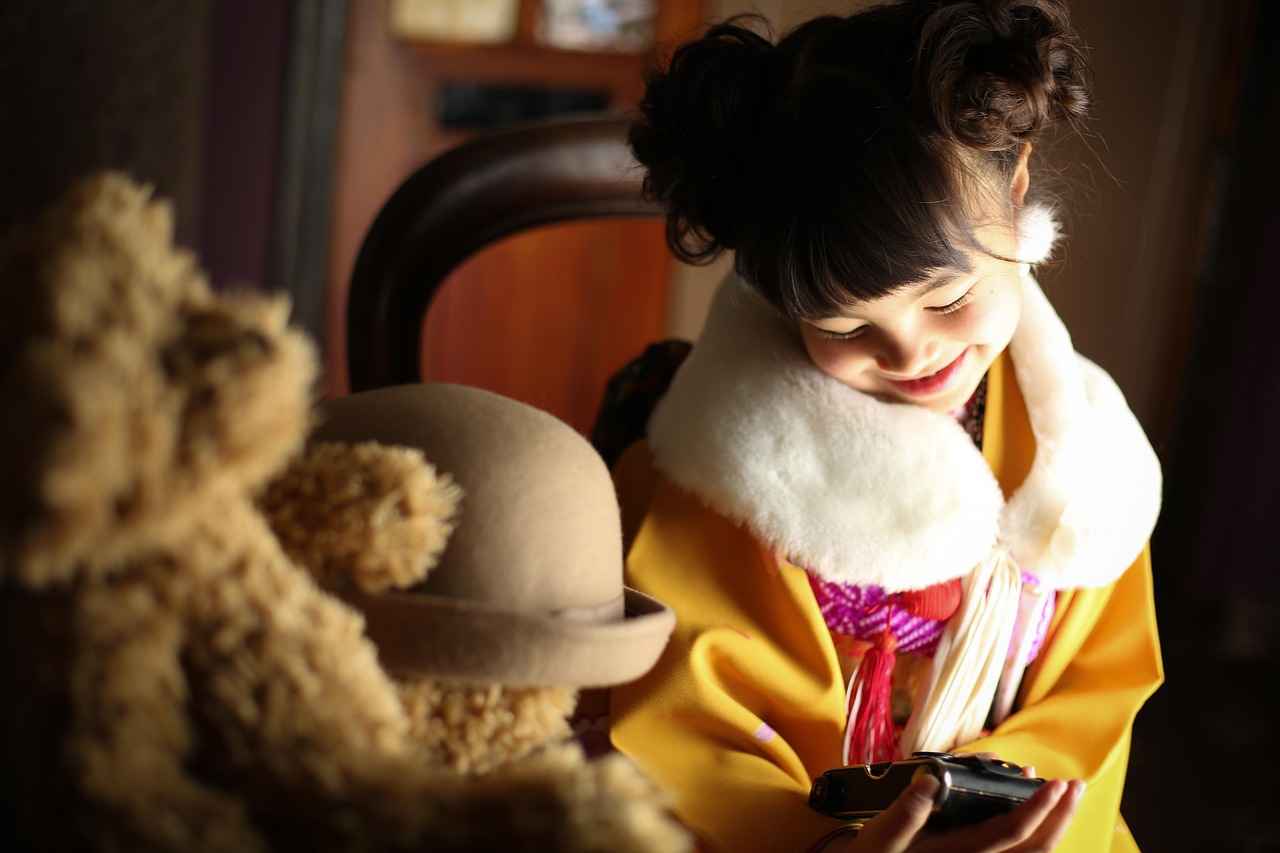
Layering Techniques for a Modern Twist
Layering is a powerful technique that can significantly enhance your kimono look, adding depth and dimension to your outfit. By skillfully combining traditional elements with modern fashion sensibilities, you can create a unique ensemble that stands out. Here are some effective layering techniques to consider:
- Start with a Base Layer: Begin with a simple, fitted top or turtleneck underneath your kimono. This creates a streamlined silhouette and allows the kimono to be the focal point of your outfit.
- Add a Mid-Layer: Incorporate a lightweight cardigan or a cropped jacket over your kimono. This not only provides warmth but also introduces an additional texture to your look.
- Experiment with Lengths: Play with varying lengths by pairing a longer kimono with a shorter top or vice versa. This contrast can create a visually appealing style that draws the eye.
- Use Accessories: Scarves and belts can be fantastic layering tools. A wide belt can cinch the waist, giving your kimono shape, while a scarf can add a pop of color and pattern.
- Incorporate Modern Outerwear: Consider pairing your kimono with a contemporary trench coat or a stylish bomber jacket. This fusion of styles can create a chic, urban look.
When layering, it’s essential to maintain a balance between traditional and modern elements. Opt for neutral colors or subtle patterns that complement your kimono without overwhelming it. Additionally, be mindful of the fabric weights; combining heavy and light materials can lead to an unbalanced appearance.
Ultimately, layering allows you to express your personal style while honoring the rich history of the kimono. By implementing these techniques, you can achieve a look that is both timeless and fashion-forward.
Outerwear Options to Consider
Choosing the right outerwear is essential when styling your kimono outfit, as it can significantly enhance your overall look while providing necessary warmth. In this section, we will explore various stylish outerwear options that not only keep you cozy but also maintain a chic appearance.
- Lightweight Kimonos: A lightweight kimono can serve as an excellent layer over your traditional kimono. Opt for fabrics like chiffon or georgette that add elegance without overwhelming your outfit.
- Trench Coats: A well-fitted trench coat can elevate your kimono look, providing a contemporary twist. Choose neutral colors to complement the vibrant patterns of your kimono.
- Cardigans: Long, flowing cardigans are perfect for casual outings. They add a relaxed vibe while allowing the beauty of your kimono to shine through.
- Denim Jackets: For a modern and edgy look, consider pairing your kimono with a fitted denim jacket. This combination balances traditional and modern styles effortlessly.
- Puffer Jackets: In colder weather, a stylish puffer jacket can provide warmth without sacrificing style. Look for options that feature unique designs or colors to stand out.
- Capes: A cape can add drama and sophistication to your kimono outfit. Choose one with intricate detailing to enhance the overall aesthetic.
When selecting outerwear, consider the color palette and patterns of your kimono to ensure a harmonious look. The goal is to create a seamless blend of traditional and modern elements while staying true to your personal style.
Ultimately, the right outerwear can transform your kimono outfit from ordinary to extraordinary, allowing you to express your individuality while honoring cultural traditions.
Mixing and Matching with Contemporary Fashion
is a creative way to breathe new life into traditional kimono attire. By blending these beautiful garments with modern pieces, you can create a unique look that honors cultural heritage while making a bold fashion statement. Here are some practical tips to achieve this stylish fusion.
- Layering Techniques: Start by layering your kimono with a fitted turtleneck or a casual graphic tee. This not only adds warmth but also introduces a contemporary edge to the traditional silhouette.
- Bottoms That Pop: Pair your kimono with modern bottoms such as high-waisted jeans, tailored trousers, or even a sleek pencil skirt. This combination creates a balanced look that merges the elegance of the kimono with the casual vibe of contemporary fashion.
- Footwear Fusion: Footwear can dramatically change the tone of your outfit. Consider wearing stylish ankle boots or trendy sneakers to juxtapose the traditional elements of your kimono with a modern flair.
- Accessorizing Wisely: Accessories can make or break your look. Opt for minimalist jewelry or statement pieces that resonate with current trends. A crossbody bag or a structured tote can also add a modern touch to your ensemble.
When mixing and matching, it’s essential to consider the color palette and patterns of your kimono. Opt for neutral shades or subtle patterns that can easily blend with contemporary pieces. This approach ensures that your outfit remains cohesive and stylish.
In conclusion, the art of mixing traditional kimonos with modern fashion elements allows for endless creativity. By thoughtfully selecting complementary pieces and accessories, you can craft a standout look that is both respectful of tradition and reflective of contemporary style.

Styling Tips for Different Occasions
When it comes to wearing a kimono, understanding the context of the occasion is essential for achieving the perfect look. Different events call for varied styling approaches, and knowing how to adapt your kimono can enhance your overall aesthetic. Here are some practical tips for dressing your kimono for casual outings, formal events, and everything in between.
- Casual Outings: Keeping it Relaxed
- Opt for lightweight fabrics like cotton or blends that allow for breathability.
- Pair your kimono with a simple t-shirt and jeans for an effortless look.
- Accessorize with casual footwear, such as sneakers or flat sandals, to maintain comfort.
- Formal Events: Elevating Your Kimono Style
- Choose luxurious fabrics such as silk or satin that exude elegance.
- Incorporate traditional accessories, like an obi belt, to enhance the formal appeal.
- Opt for refined footwear, such as heels or dressy sandals, to complete the sophisticated look.
- Workplace Attire: Balancing Professionalism and Style
- Select a kimono with subtle patterns or solid colors for a polished appearance.
- Layer with a fitted blazer or cardigan to maintain a professional silhouette.
- Choose closed-toe shoes or loafers to keep the outfit appropriate for the office.
- Festive Occasions: Celebrating with Flair
- Embrace vibrant colors and bold patterns that reflect the celebratory spirit.
- Accessorize with statement jewelry or decorative hairpieces to stand out.
- Pair with festive footwear, such as embellished sandals or stylish wedges, for an eye-catching ensemble.
By adapting your kimono styling based on the occasion, you can effortlessly transition from casual to formal while showcasing your unique fashion sense. Remember, the key is to balance tradition with modern trends to create a look that is both respectful and stylish.
Casual Outings: Keeping it Relaxed
When it comes to casual outings, the key to a stylish look lies in comfort and ease. The kimono, with its rich cultural heritage, can be seamlessly integrated into your everyday wardrobe, offering a unique blend of tradition and modernity. Here’s how to style your kimono for a laid-back yet fashionable appearance.
- Opt for Lightweight Fabrics: Choose kimonos made from breathable materials like cotton or linen. These fabrics not only provide comfort but also allow for easy movement, making them perfect for casual settings.
- Play with Length: Shorter kimonos or those with a relaxed fit are ideal for casual outings. Pair them with fitted jeans or shorts for a balanced silhouette that feels effortless.
- Mix and Match: Don’t hesitate to combine your kimono with casual staples like a simple t-shirt or tank top. This creates a layered look that is both stylish and comfortable.
- Accessorize Wisely: Keep accessories minimal yet impactful. A pair of statement earrings or a simple necklace can elevate your outfit without overwhelming it.
- Footwear Choices: Sneakers or flat sandals are great options to maintain a relaxed vibe. They complement the kimono while ensuring you stay comfortable throughout the day.
By focusing on these styling tips, you can effortlessly wear your kimono for casual outings, making it a versatile piece in your wardrobe. Remember, the goal is to feel comfortable while looking fashionable.
Embrace the beauty of the kimono in your everyday life and enjoy the blend of tradition with a modern twist!
Formal Events: Elevating Your Kimono Style
When attending formal occasions, the choice of attire reflects not only personal style but also an appreciation for cultural heritage. The kimono, with its rich history and elegance, serves as an excellent canvas to express sophistication. Here are some key elements to consider when dressing your kimono for formal events.
- Fabric Selection: Opt for luxurious materials such as silk or high-quality blends that drape beautifully. These fabrics not only enhance the overall look but also provide comfort throughout the event.
- Color Palette: Choose deep, rich colors or soft pastels that resonate with the formality of the occasion. Traditional hues like indigo or crimson can add a touch of authenticity, while modern shades can keep the look fresh.
- Patterns and Motifs: Incorporate subtle patterns that reflect elegance without overwhelming the eye. Floral designs or geometric patterns can be a great choice, symbolizing beauty and balance.
- Accessories: Select accessories that complement your kimono. A delicate obi (sash) can enhance your waistline, while elegant jewelry, such as pearl earrings or a simple bracelet, can add a touch of sophistication.
- Footwear: Choose traditional zori sandals or modern heels that elevate your stature while ensuring comfort. The right footwear can significantly impact your overall appearance.
Layering is another effective technique to elevate your kimono look. Consider adding a tailored jacket or a stylish shawl that aligns with the formal nature of the event. This not only adds warmth but also creates a polished silhouette.
In conclusion, dressing your kimono for formal events is about embracing tradition while incorporating modern elements. By focusing on fabric, color, patterns, accessories, and footwear, you can create a sophisticated look that honors the kimono’s cultural significance while ensuring you stand out at any formal gathering.

Conclusion: Embracing Tradition in a Modern World
In today’s fast-paced and ever-evolving fashion landscape, combining traditional kimono elements with modern styles has become a powerful means of creative expression. This fusion not only celebrates the rich cultural heritage of the kimono but also allows individuals to craft a look that is uniquely their own. By embracing this blend, you can pay homage to centuries of tradition while also making a statement in contemporary fashion.
The kimono is more than just a garment; it is a symbol of history and artistry. Understanding its significance enriches your approach to modern styling. By selecting the right fabrics, such as luxurious silk for formal occasions or comfortable cotton for casual wear, you can create outfits that honor the kimono’s legacy while remaining relevant in today’s style scene.
Furthermore, the choice of patterns and colors plays a crucial role in achieving this balance. Opting for traditional motifs infused with a modern color palette can create a stunning visual impact. Accessories also enhance this fusion; from traditional zori sandals to trendy sneakers, the right footwear can elevate your kimono look significantly. Jewelry should be chosen carefully to complement your outfit, ensuring that it harmonizes with the overall aesthetic.
Layering techniques further allow for a modern twist. Pairing your kimono with contemporary outerwear can create depth and sophistication, making it suitable for various occasions. Whether dressing for a casual outing or a formal event, the key is to maintain a balance between comfort and elegance.
In conclusion, embracing the fusion of traditional kimono elements with modern fashion provides a unique opportunity for self-expression. By honoring cultural heritage while adapting to contemporary trends, you can create a style that is not only personal but also rich in meaning. This approach invites everyone to explore their creativity and redefine what it means to wear a kimono in today’s world.
Frequently Asked Questions
- What is the significance of the kimono in Japanese culture?
The kimono is more than just a piece of clothing; it represents Japan’s rich cultural heritage and history. Wearing a kimono can connect you to traditions that have been cherished for centuries, making it a meaningful choice for any occasion.
- How do I choose the right fabric for my kimono?
Selecting the right fabric is essential for both comfort and style. Traditional options like silk offer a luxurious feel, while cotton blends provide practicality for everyday wear. Think about the occasion and your personal style when making your choice!
- Can I wear modern accessories with my kimono?
Absolutely! Accessories can add a contemporary twist to your kimono look. From trendy footwear to chic jewelry, mixing modern elements with traditional attire can create a unique and stylish appearance that reflects your personality.
- What are some tips for styling a kimono for casual outings?
For a relaxed look, pair your kimono with comfortable jeans or a simple dress. Keep the accessories minimal to maintain a laid-back vibe, and don’t forget to choose footwear that complements your outfit without overpowering it!
- How can I elevate my kimono for formal events?
To dress up your kimono for formal occasions, opt for elegant fabrics like silk and incorporate sophisticated accessories. A stylish clutch and refined jewelry can enhance your overall look, ensuring you stand out in any formal setting.





